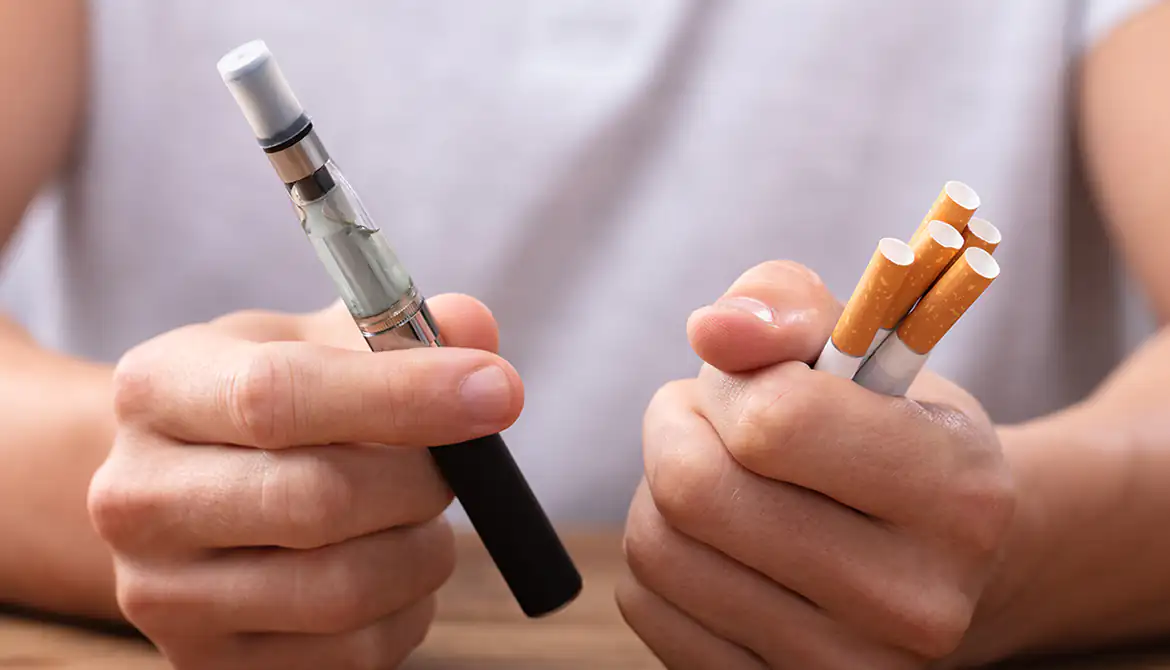Comparing vaping addiction to smoking addiction is an interesting topic. Vaping and smoking are two different ways people use nicotine, which is a chemical that can be addictive. Understanding how addiction works in each case can help us see the similarities and differences between vaping and smoking.
What is Vaping Addiction?
Vaping involves using electronic cigarettes, also known as e-cigarettes or vapes. These devices heat a liquid that usually contains nicotine, flavors, and other chemicals. When a person inhales this vapor, they get the nicotine hit without burning tobacco like in traditional cigarettes.
How Vaping Addiction Works:
Nicotine in e-cigarettes can be addictive because it activates the brain’s reward system. When someone vapes, nicotine quickly enters their bloodstream and reaches the brain. This triggers the release of chemicals like dopamine, which makes people feel good temporarily. Over time, the brain starts to depend on nicotine to feel normal, leading to addiction.
One key difference with vaping is the ability to control nicotine levels. Some e-liquids have high nicotine concentrations, similar to traditional cigarettes, while others have lower amounts or none at all. This variability can affect how addictive vaping is for different people.
What is Smoking Addiction?
Smoking involves burning tobacco and inhaling the smoke. Tobacco smoke contains thousands of chemicals, including nicotine, tar, and carbon monoxide. Nicotine is the main addictive substance in cigarettes.
How Smoking Addiction Works:
When a person smokes, nicotine is absorbed into their bloodstream through the lungs and reaches the brain within seconds. Like vaping, nicotine stimulates the release of dopamine, creating pleasurable feelings. As smoking continues, the brain becomes accustomed to nicotine and craves it. This cycle of dependence makes quitting smoking difficult for many people.
Unlike vaping, traditional cigarettes have consistent nicotine levels, making them highly addictive. The act of smoking itself becomes a habitual part of daily life, further reinforcing addiction through rituals and associations.
Similarities between Vaping and Smoking Addiction
Both vaping and smoking addiction share common traits due to nicotine:
- Dependency: Nicotine in both vaping and smoking can lead to physical and psychological dependence. People may feel anxious, irritable, or have strong cravings when they try to quit.
- Brain Effects: Both methods deliver nicotine to the brain, where it affects mood, concentration, and pleasure. Dopamine release reinforces the addiction cycle in similar ways.
- Behavioral Patterns: Both vaping and smoking involve habitual behaviors and rituals. These routines, such as reaching for a vape or taking smoke breaks, can reinforce addiction over time.
Differences between Vaping and Smoking Addiction
Despite similarities, there are notable differences:
- Chemical Exposure: Smoking exposes users to harmful chemicals like tar and carbon monoxide, which are linked to serious health conditions. Vaping typically involves fewer toxic chemicals, though the long-term health effects of e-cigarette use are still being studied.
- Nicotine Control: Vaping allows more control over nicotine levels. Users can choose e-liquids with varying nicotine concentrations or opt for nicotine-free options. This flexibility can influence addiction severity.
- Social Perceptions: Vaping is often perceived as less harmful and more socially acceptable than smoking. This perception can impact addiction behaviors and motivations to quit.
Comparing Vaping Addiction with Smoking Addiction
While both vaping and smoking involve nicotine addiction, the methods differ in delivery, chemical exposure, and social perceptions. Understanding these differences can help individuals make informed choices about their health and addiction treatment options. Whether vaping or smoking, seeking support and resources can aid in overcoming nicotine addiction and improving overall well-being.
